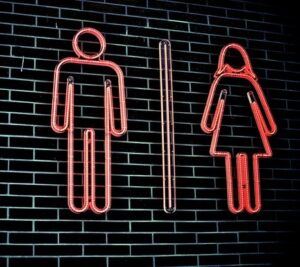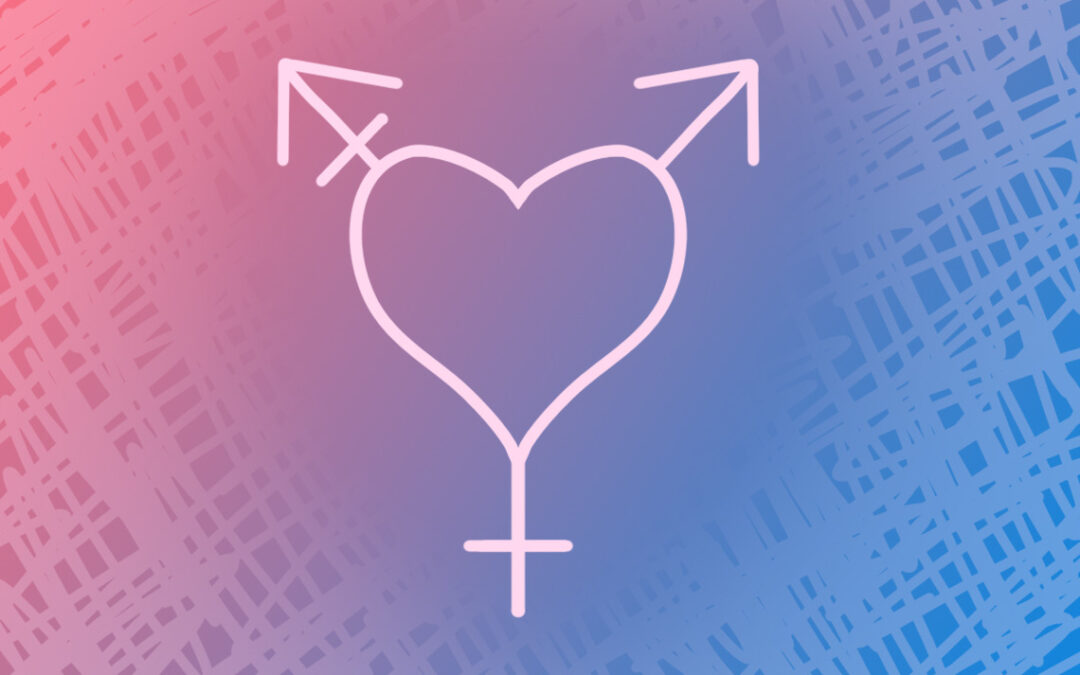As promised in my introductory post, this week’s topic is a little more sociological, a little more treacherous, and, in my opinion, a lot more important to understand.
Transmisogyny
When I was maybe twenty years old, perusing my favorite off-color Manhattan bookshop, a neon pink binding caught my attention. The cover, sporting slim hands clipping jewelry around an exposed neck, was stamped with the title, Whipping Girl: A Transsexual Woman on Sexism and the Scapegoating of Femininity.
It was the word “scapegoating” that produced the little furrow in my brow. I paid for the text, left, and began reading on the subway ride home.
Julia Serano, a trans poet, author, speaker, and activist, coined the term “Transmisogyny” in 2007, in the very book my curious, naive young hands had plucked from the pile. “Whipping Girl” is a collection of personal essays ruminating on the many adverse effects of a strict gender hierarchy in Western society. In short, the phenomenon of transmisogyny may explain why trans women in particular receive the brunt of society’s violence and oppression.
Transwomen and Acts of Violence
Trans women — and especially trans women of color — are much more likely than cis-gendered women to be victims of assault, and particularly sexual assault: In the 2015 U.S. Transgender Study, 9% of respondents reported being physically attacked specifically for being transgender, within the last year of the survey. 47% said they had been sexually assaulted in their lives, 10% in the last year alone. These rates are double or even triple the rates of sexual assault on cisgendered people based on similar surveys.
To make matters worst, many experts agree that police prejudice and social stigma result in a severe under-reporting of crimes against trans people.Trans women are often forced into poverty by close-minded family, friends, and employers, and are far more likely to become sex workers, thus putting them in the line of fire for a wide array of systemic violences.
I could rant endlessly about how our society punishes trans women, and of course, trans men are no stranger to these self-same hardships, from unjust prison policies to police brutality to access to welfare programs and healthcare. But the purpose of this post isn’t to wax poetic on injustice, but to explain why, from a psychological perspective, our society has blindly agreed trans people deserve such treatment. It is my belief that understanding and accepting our internal biases is the first step towards unraveling them.
Binary Gender Construct + Patriarchy = Misogyny
 Transmisogyny begins with the subconscious acceptance of the gender binary. There are two types of people — male and female — and those identities begin in the genitals. However, this binary dictates more than just an assigned gender. Carried with it are a mountain of predetermined cultural roles, activities, and dispositions. When we accept this premise, consciously or not, anyone crossing this divide is either eyed with suspicion or considered an outright threat.
Transmisogyny begins with the subconscious acceptance of the gender binary. There are two types of people — male and female — and those identities begin in the genitals. However, this binary dictates more than just an assigned gender. Carried with it are a mountain of predetermined cultural roles, activities, and dispositions. When we accept this premise, consciously or not, anyone crossing this divide is either eyed with suspicion or considered an outright threat.
But when the culture of patriarchal dominance layers on top of the gender binary, things get even trickier. Suddenly, all females are lesser, weaker, inferior. As such, all female roles are inferior, and then all female activities, all female modes of behavior. It’s from this base ideology that phrases like “You throw like a girl,” or “Don’t be a pussy” arise. The implicit message we are bombarded with all our lives is that maleness is to be aspired towards and femaleness is to be shamed.
So what, exactly, are we supposed to make of male-bodied people who “choose” femininity?
To seriously oversimplify transmisogyny, and yet to get to the heart of the matter, the idea that someone born with the privilege inherent in maleness would forsake those advantages to live a happier and more fulfilled life as a woman, poses a deep and overwhelming threat to patriarchal ideology. Trans women carry the shame of femininity over into the male-bodied sphere, threatening masculine dominance by sheer association, and posing questions about the veracity of such a binary that few are comfortable answering.
As such, it becomes alarmingly easy to “Other” trans people. For people who can’t let go of their internal biases, the only way to comprehend such a desire is to pathologize and vilify it. If trans people are ill or dangerous, then punishing them for existing becomes all too easy.
It doesn’t have to be that way.
 Grappling with transphobia goes beyond just ‘letting people live their lives’. It’s bigger than accepting your nonbinary neighbor or feeling sympathy for the subject of a news article. It takes reflection and skepticism. Where along the road of this description did you find your hangups? What points did you struggle with? When in your life have you taken for granted what it means to be a man or a woman? How have you rationalized your own judgements and associations?
Grappling with transphobia goes beyond just ‘letting people live their lives’. It’s bigger than accepting your nonbinary neighbor or feeling sympathy for the subject of a news article. It takes reflection and skepticism. Where along the road of this description did you find your hangups? What points did you struggle with? When in your life have you taken for granted what it means to be a man or a woman? How have you rationalized your own judgements and associations?
Who might you be if you tossed the binary out the window and created a gender all your own?
In the following days, I’ll be posting a secondary article, breaking down the fallacies inherent in many of these outlooks and paradigms. In the meantime, ask yourself the hard questions, and talk to others. When we dispose of the boxes that hold us down, who knows? We might evolve to grow wings.
If you’re curious to learn more about Julia Serano, please visit her web page www.juliaserano.com/ and try out her books! For more on existing research and data on trans and nonbinary violence, click HERE.



